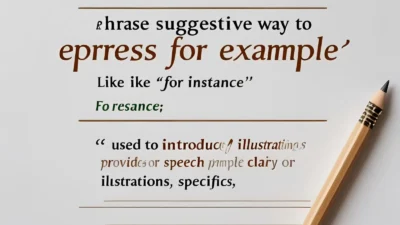This Is What It Means to Say Phoenix Arizona Summary explores the emotional journey of two childhood friends reconnecting on a road trip after a family death.
Written by Sherman Alexie, this short story captures themes of friendship, identity, and Native American life with powerful simplicity.
In this summary, we break down the key plot points, characters, and underlying messages of the story to help you understand its deeper meaning.
Sorry Generator
What Is “This Is What It Means to Say Phoenix, Arizona” About?
Sherman Alexie’s short story tells the tale of Victor, a young Native American man living on a reservation, and Thomas Builds-the-Fire, a childhood friend. When Victor’s father dies in Phoenix, he must travel there to collect his ashes. He doesn’t have enough money, but Thomas offers to help—with one condition: he gets to go with him.
The story follows their journey together, both physically and emotionally. Along the way, they revisit childhood memories, repair a strained friendship, and explore their own identities as Native Americans in modern America.
What to Say:
- “It’s about healing after loss.”
- “The story shows how important friendships can be.”
- “It’s a journey of self-discovery and reconnection.”
- “It brings Native voices to the front.”
What Not to Say:
- “It’s just about a road trip.”
- “Nothing really happens in the story.”
- “Thomas is just weird for no reason.”
- “It’s hard to understand.”
Who Are the Main Characters?
The story centers around Victor and Thomas Builds-the-Fire.
- Victor is quiet, serious, and struggling with grief and financial hardship.
- Thomas is a storyteller with a deep spiritual side. He often tells strange, thoughtful stories that few take seriously.
Even though they were once close as kids, they grew apart. This trip becomes a way for them to reconnect and understand each other in new ways.
What to Say:
- “Victor is trying to find peace after his dad’s death.”
- “Thomas sees the world in a deeper way.”
- “Their differences show the challenges of cultural change.”
- “Both characters grow on the journey.”
What Not to Say:
- “Thomas is just crazy.”
- “Victor is cold and boring.”
- “They don’t belong together.”
- “Their friendship doesn’t matter.”
Why Is the Title Important?
The title “This Is What It Means to Say Phoenix, Arizona” isn’t just about a place. Phoenix is known as a mythical bird that rises from ashes, symbolizing rebirth and renewal. That’s what this story is really about—rising from pain, reconnecting with your past, and starting again.
Victor’s trip to Phoenix leads him to more than just his father’s ashes. He finds understanding, forgiveness, and a second chance at friendship.
What to Say:
- “Phoenix represents starting over.”
- “It’s about rising after hard times.”
- “The title connects to the theme of healing.”
- “It’s more than just a place—it’s a symbol.”
What Not to Say:
- “It’s just where the dad lived.”
- “The title doesn’t matter.”
- “There’s no deeper meaning.”
- “It’s confusing.”
What Are the Main Themes?
This story is rich with emotional and cultural themes that speak to many people.
- Loss and grief – Victor is dealing with his father’s death and what it means to lose someone who was already distant.
- Friendship – The bond between Victor and Thomas, though strained, becomes a source of comfort and growth.
- Identity – Both characters struggle with what it means to be Native American in a world that often misunderstands them.
- Storytelling – Thomas’s stories are more than entertainment—they are a way to remember, teach, and heal.
What to Say:
- “The story speaks about real struggles Native people face.”
- “Grief and memory are big parts of the story.”
- “Friendship is shown as a path to healing.”
- “Stories have deep meaning in the book.”
What Not to Say:
- “There’s only one theme.”
- “It’s just about the dad dying.”
- “It’s not really emotional.”
- “Nothing deep happens.”
How Does the Story End?
At the end of the story, Victor and Thomas return home. Victor gives Thomas half of his father’s ashes—a powerful, symbolic gesture. They know they may not stay friends, but a deep connection was shared on this trip.
It’s a quiet ending, but it’s full of meaning. Sometimes, just sharing a moment with someone can help you heal.
What to Say:
- “It’s a bittersweet ending with emotional growth.”
- “The ashes represent shared memory and healing.”
- “They found peace, even if just for a moment.”
- “It shows the power of small actions.”
What Not to Say:
- “Nothing changes.”
- “The ending doesn’t matter.”
- “It’s not a real resolution.”
- “It’s too simple.”
Final Thoughts
In this This Is What It Means to Say Phoenix Arizona summary, we’ve explored a story that’s full of heart and meaning. Through Victor and Thomas, Sherman Alexie gives us a look at grief, identity, friendship, and the healing power of stories.
It’s not just about going to Phoenix—it’s about finding yourself on the way there.
Whether you’re reading this for class or personal growth, this story reminds us that even hard journeys can lead to something beautiful.




